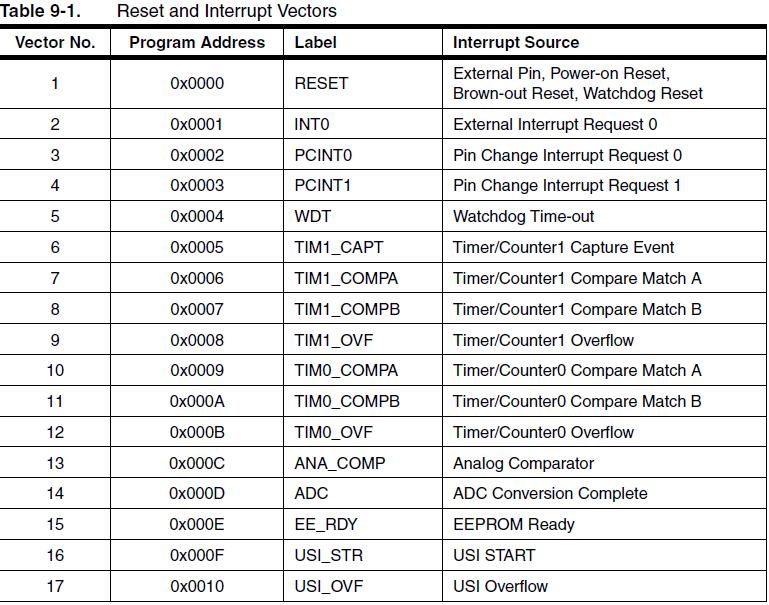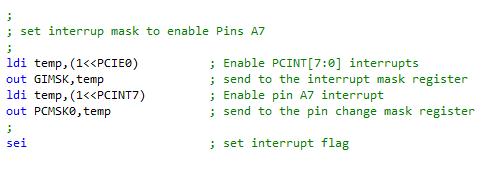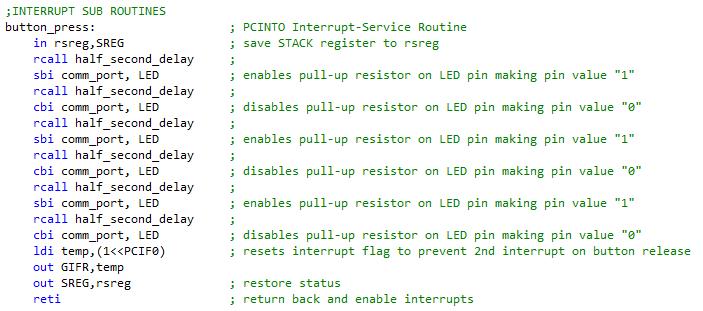Embedded Programming
This week's assignment was to read a microcontroller datasheet and then program the serial echo board, that we made 2 weeks ago with the LED and button, to do something
I used the Tiny 44 datasheet to try and understand the assembly language program that Neil had written for the serial echo board. This was surprisingly successful and I managed to fully understand the program. I decided to try and experiment with interrupts as I had heard a lot about them previously but didn't really understand how they worked. I decided that in addition to the function of echoing characters to the PC I would flash the LED 3 times whenever the button was pressed.
As I had already connected the button to PA7 on the controller I used the PCINT0 interrupt from the table below as this allowed me to define one of the PA[0..7] pins to generate the interrupt condition

In order to use interrupts I had to use the following code in the main programme to configure them

I then had to write the interrupt routine to turn the LED pin on and off with delays of 1/2 second

Disabling the interrupts during this routine was key as this prevented a repeat interrupt queuing up as a result of the release of the button (the interrupt was defined on a rising or falling level on the pin).
The interrupt is then called by placing the interrupt routine call at the start of the program

The 'reti' command is used to skip unused interrupts from the table above, in this case skipping INT0
I used AVR Studio 5 to modify the programme and also used this to create the HEX file directly. I then uploaded this in Ubuntu using AVRdude and my FabISP Programmer. I was very pleased with the result (to save space I have uploaded video to YouTube):
Serial Echo with flashing LEDs video